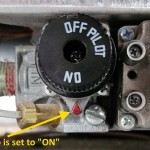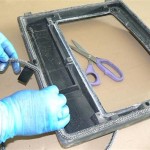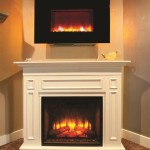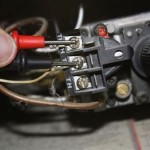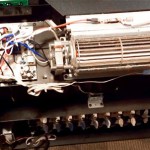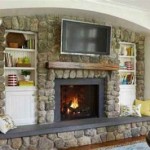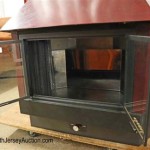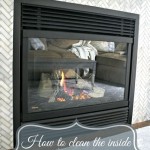Electric Fireplace vs. Gas Fireplace: A Comparative Analysis
The decision to install a fireplace involves careful consideration of various factors, primarily revolving around fuel type. Electric and gas fireplaces represent two prevalent options, each possessing distinct advantages and disadvantages concerning installation, aesthetics, operational costs, and environmental impact. A thorough understanding of these aspects allows for a well-informed choice tailored to individual needs and circumstances.
Installation Considerations
The installation process differs significantly between electric and gas fireplaces. Electric fireplaces are generally easier and less expensive to install. They require only a standard electrical outlet. Many models are designed for simple placement against a wall or within an existing mantel, requiring minimal structural modifications. Some electric units are even portable, offering maximum flexibility in placement.
Gas fireplaces, conversely, necessitate a more complex and costly installation. They require a gas line connection, which may involve running new piping to the desired location. This task typically demands the expertise of a qualified plumber or gas fitter. Furthermore, gas fireplaces need proper venting to exhaust combustion byproducts safely. This venting can take the form of a direct vent system, which draws air from outside and expels exhaust directly outside, or a chimney system, which utilizes an existing chimney or necessitates the construction of a new one. The complexity of gas fireplace installation often mandates professional installation and adherence to local building codes, further contributing to the overall cost.
The location of the fireplace also plays a crucial role in the installation process. Electric fireplaces are virtually unrestricted in their placement due to their simple electrical requirements. Gas fireplaces, however, are constrained by the availability of a gas line and the feasibility of venting. This can limit placement options and potentially require significant remodeling to accommodate the necessary infrastructure.
Aesthetics and Visual Appeal
Both electric and gas fireplaces offer a range of aesthetic options, but the realism and visual appeal of the flames differ considerably. Traditional gas fireplaces often feature realistic-looking flames generated by burning natural gas or propane. The flames can be controlled to adjust the heat output and create a visually appealing ambiance. Gas fireplaces typically incorporate ceramic logs or other decorative media to simulate the appearance of a wood-burning fireplace.
Electric fireplaces, while initially offering less realistic flames, have undergone significant advancements in recent years. Modern electric fireplaces employ sophisticated technology, such as LED lighting and holographic projections, to create more convincing flame effects. These effects can be customized to adjust the color, intensity, and speed of the flames. Some electric fireplaces even incorporate crackling sound effects to further enhance the ambiance.
Beyond the flames themselves, the overall design and style of the fireplace contribute significantly to its aesthetic appeal. Both electric and gas fireplaces are available in a wide variety of styles, ranging from traditional to contemporary. Options include wall-mounted units, freestanding models, and inserts designed to fit into existing fireplace openings. The choice of materials, finishes, and decorative elements further expands the aesthetic possibilities, allowing homeowners to select a fireplace that complements their existing decor.
While the realism of gas fireplace flames is generally considered superior, electric fireplaces offer greater flexibility in terms of customization. The color, intensity, and speed of the flames can be adjusted to create a personalized ambiance. Furthermore, many electric fireplaces offer the option to operate the flame effect without heat, allowing for year-round enjoyment of the visual appeal.
Operational Efficiency and Cost
The operational efficiency and cost of electric and gas fireplaces are important factors to consider. Electric fireplaces are generally more energy-efficient than gas fireplaces. They convert nearly 100% of the electrical energy into heat, minimizing energy waste. The cost of operating an electric fireplace depends on the electricity rates in the area and the heat setting used. However, electric fireplaces can be a cost-effective heating solution for smaller spaces or supplemental heating applications.
Gas fireplaces, on the other hand, are typically less energy-efficient, with a portion of the heat being lost through the venting system. The cost of operating a gas fireplace depends on the price of natural gas or propane and the heat output of the unit. While gas fireplaces may provide more heat output than electric fireplaces, they can also be more expensive to operate, particularly if used frequently or for extended periods.
Maintenance costs also vary between electric and gas fireplaces. Electric fireplaces generally require minimal maintenance. The heating elements may need to be replaced periodically, but this is typically a simple and inexpensive task. Gas fireplaces, however, require regular maintenance, including cleaning the burner assembly and inspecting the venting system. Professional servicing is recommended to ensure safe and efficient operation.
In assessing operational costs, it's important to consider the climate and heating needs of the home. In colder climates where supplemental heating is frequently required, the higher heat output of a gas fireplace may be more cost-effective in the long run. However, for occasional use or supplemental heating in milder climates, an electric fireplace may be a more efficient and cost-effective option.
Safety Considerations
Safety is a paramount concern when choosing between electric and gas fireplaces. Electric fireplaces are generally considered safer than gas fireplaces. They do not produce open flames or combustion byproducts, eliminating the risk of carbon monoxide poisoning or gas leaks. The surface of an electric fireplace can get warm, but it is typically not hot enough to cause serious burns. Many electric fireplaces also incorporate safety features such as automatic shut-off mechanisms to prevent overheating.
Gas fireplaces, however, pose some inherent safety risks. They produce open flames and combustion byproducts, requiring proper venting to prevent carbon monoxide buildup. Gas leaks can also occur, leading to potential explosions or fires. It is crucial to have gas fireplaces professionally installed and maintained to ensure safe operation. Carbon monoxide detectors should be installed in homes with gas fireplaces to provide early warning of any potential leaks.
The risk of burns is also a consideration with gas fireplaces. The glass front of a gas fireplace can become extremely hot during operation, posing a burn hazard, particularly to young children or pets. Safety screens or barriers are often recommended to prevent accidental contact with the hot glass. Some newer models incorporate cool-touch glass technology to mitigate this risk.
While both electric and gas fireplaces are subject to safety standards and regulations, the inherent nature of gas combustion necessitates greater vigilance and adherence to safety protocols. Regular inspections and maintenance are essential to ensure the safe operation of a gas fireplace.
Environmental Impact
The environmental impact of electric and gas fireplaces is a growing concern. Electric fireplaces do not produce direct emissions, making them a cleaner option from a local air quality perspective. However, the electricity used to power an electric fireplace may be generated from fossil fuels, contributing to overall greenhouse gas emissions. The environmental impact of an electric fireplace depends on the energy source used to generate the electricity.
Gas fireplaces, on the other hand, directly emit greenhouse gases, including carbon dioxide and methane, during combustion. The combustion process also produces other air pollutants, such as nitrogen oxides and particulate matter. The environmental impact of a gas fireplace depends on the efficiency of the unit and the type of fuel used. Natural gas is generally considered a cleaner-burning fuel than propane, but both contribute to greenhouse gas emissions.
The use of renewable energy sources can mitigate the environmental impact of electric fireplaces. If the electricity is generated from solar, wind, or hydroelectric power, the overall carbon footprint of the electric fireplace is significantly reduced. Some homeowners may choose to install solar panels or purchase renewable energy credits to offset the emissions associated with their electric fireplace.
The development of more efficient gas fireplace technologies is also helping to reduce their environmental impact. Direct vent gas fireplaces, which draw air from outside and expel exhaust directly outside, are more efficient than traditional chimney systems. The use of catalytic converters can also reduce emissions of air pollutants.
The choice between electric and gas fireplaces from an environmental perspective depends on a variety of factors, including the energy source used to generate electricity, the efficiency of the gas fireplace, and the overall heating needs of the home.

Gas Vs Electric Fireplaces Montigo

Gas Fireplaces Vs Electric Bowden S Fireside

Advantages Of Gas Vs Electric Fireplaces

Should I Buy A Gas Or Electric Fireplace What Is The Difference
Gas Wood Pellet Electric Which Fireplace Or Stove Is Right For You Marshall S Inc

Electric Fireplace Modern Flames

Gas Vs Electric Fireplace

Fireplace Usage Cost Calculator

Electric Fireplaces A Safe Alternative To Gas Touchstone Home S Inc

Convert A Gas Or Wood Fireplace To An Electric

